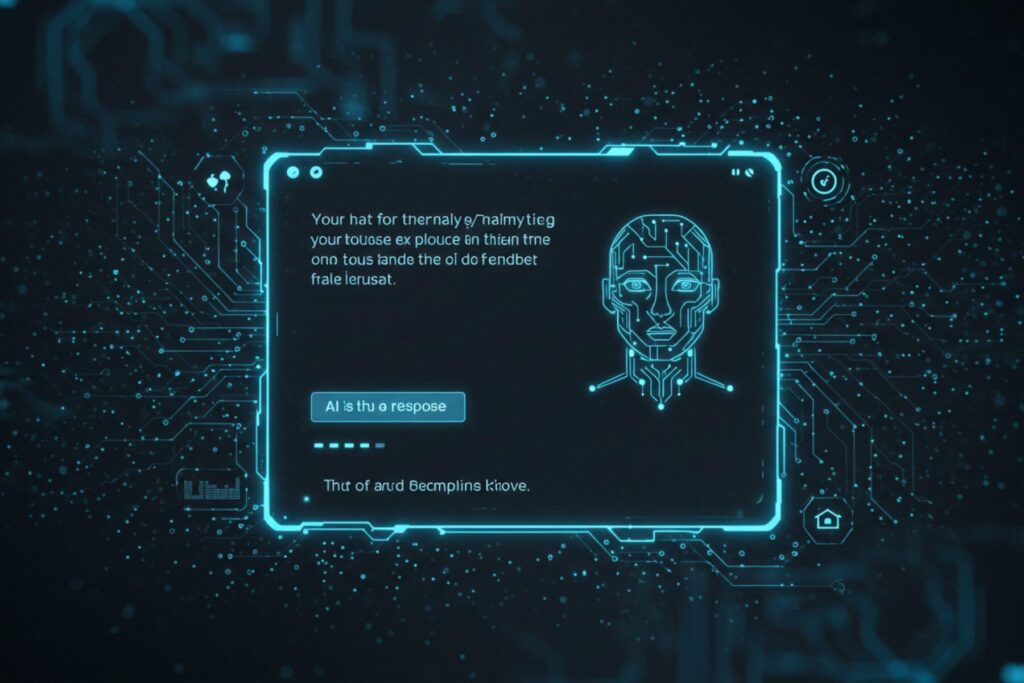In 2025, Generative Engine Optimization (GEO) has taken center stage in digital marketing, and ChatGPT is playing a key role in making it more powerful, personalized, and effective. Unlike traditional SEO, GEO is driven by how generative AI engines like ChatGPT interpret, surface, and deliver content to users. As search engines evolve into answer engines, the way we create and optimize content is changing fast. Let’s explore ten ways ChatGPT is being used to boost visibility and performance in GEO strategies this year.
1. Creating AI-friendly content structures
One of the biggest ways ChatGPT is helping with GEO in 2025 is by designing content that aligns with the way generative engines understand information. Content no longer needs to just rank for keywords; it needs to answer queries directly, clearly, and in context. ChatGPT is used to create outlines and structures that anticipate user questions and provide seamless, conversational responses. This structure makes content easier for AI systems to interpret and surface in AI-generated results, giving it a much better chance of being selected as a top result in tools like ChatGPT search or Google’s AI Overviews.
2. Generating long-tail conversational queries
ChatGPT is a powerful tool for discovering the kinds of long-tail, natural language queries users actually type or speak. In 2025, brands are using ChatGPT to simulate user intent and explore how people phrase their needs in conversational ways. By inputting seed keywords or core topics, marketers can use ChatGPT to generate dozens of question-based prompts and query variations. These become the foundation for more effective GEO strategies, helping businesses target not just keywords, but real user search behavior shaped by AI-driven engines.
3. Optimizing for featured AI snippets
Featured snippets are being replaced or enhanced by AI-generated summaries in many search environments. ChatGPT is helping businesses write summaries, answers, and paragraph blocks that are more likely to be quoted in these AI snippets. Marketers feed ChatGPT with a specific user query, then ask it to generate concise, helpful responses that sound like something an AI would include in a summary. These responses are then woven into blog posts, landing pages, and FAQs to boost chances of inclusion in generative search results.
4. Enhancing topical authority with semantic expansion
In 2025, topical authority is more important than ever, especially with AI engines preferring well-rounded sources. ChatGPT helps marketers build that authority by expanding content into related semantic topics. For example, if a brand writes about “electric bikes,” ChatGPT can help generate subtopics like battery types, maintenance, regulations, and comparisons, topics that AI engines associate with deep expertise. The result is not just more content but smarter content that increases a site’s authority in the eyes of generative engines.
5. Updating and rewriting existing content for GEO
Many companies are turning to ChatGPT to rewrite or refresh older content for better GEO performance. In 2025, outdated formats and keyword stuffing don’t work anymore. ChatGPT can help rewrite content to align with natural language and improve clarity. It’s also used to restructure content, add relevant subheadings, and optimize tone and voice for AI engine preferences. These updates help older blog posts or product pages become more competitive in AI-driven search results without needing to start from scratch.
6. Training custom GPTs for brand voice and audience targeting
Brands are now using ChatGPT to create custom GPT models trained on their specific tone, product knowledge, and customer profiles. These fine-tuned GPTs generate GEO-optimized content at scale that still feels authentic. Whether it’s writing product descriptions, emails, support answers, or educational content, these models can stay consistent with brand language while aligning with generative engine requirements. This not only saves time but ensures that all content output is naturally aligned with what AI engines want to surface.
7. Creating multimodal content that AI engines prefer
ChatGPT is also being used to support multimodal content strategies. In 2025, AI search engines like Perplexity or ChatGPT-5 don’t just pull from text; they favor content that includes images, charts, tables, and even audio or video transcripts. ChatGPT helps create content descriptions, captions, alt text, and transcriptions that make multimedia more discoverable. By guiding the narrative and structure across different formats, it ensures that all parts of a page support the core topic and enhance visibility in AI-generated responses.
8. Streamlining content clusters for better crawlability
Organizing content into clusters is still effective, but now it’s more about how AI models process relationships between topics. ChatGPT is being used to map out topic clusters, suggest internal links, and even generate content briefs that connect blog posts to each other. This clustering improves how generative engines understand the relationship between different pages, increasing the chances that a site becomes the go-to source for certain queries. It also helps reduce redundancy and improve crawlability, especially when AI search agents scan your site.
9. Automating user intent testing and refinement
Testing content manually to see how it aligns with user intent can take hours. In 2025, teams are using ChatGPT to simulate user queries and test how well their content answers them. By prompting ChatGPT with real-world questions, businesses can check whether their pages are clear, relevant, and complete. If not, ChatGPT can instantly suggest edits or additions. This use of generative AI for real-time testing allows brands to iterate quickly and ensure their pages match the evolving expectations of AI-powered search interfaces.
10. Supporting scalable GEO content production across channels
Finally, one of the most valuable ways ChatGPT is supporting GEO in 2025 is by powering scalable content creation across multiple platforms. Brands use ChatGPT to write blog posts, video scripts, podcast show notes, LinkedIn articles, product pages, and even AI-specific answers tailored for platforms like Bing Copilot or Google’s SGE. By maintaining consistency in messaging and aligning all content with GEO principles, companies can dominate multiple AI search touchpoints. This cross-channel approach is crucial for visibility now that generative engines are a user’s first stop for almost everything.
Bottom line
Generative Engine Optimization is no longer a buzzword; it’s the new foundation of digital visibility. And at the heart of it, ChatGPT is proving to be a game-changing tool. In 2025, brands that harness ChatGPT’s full capabilities are seeing stronger performance in AI-driven search, better user engagement, and broader content reach. From writing content that AI understands to simulating user behavior and optimizing for answer engines, ChatGPT isn’t just supporting GEO; it’s shaping it.
If you want to stay competitive, understanding how to use ChatGPT in your GEO strategy is no longer optional; it’s essential.



